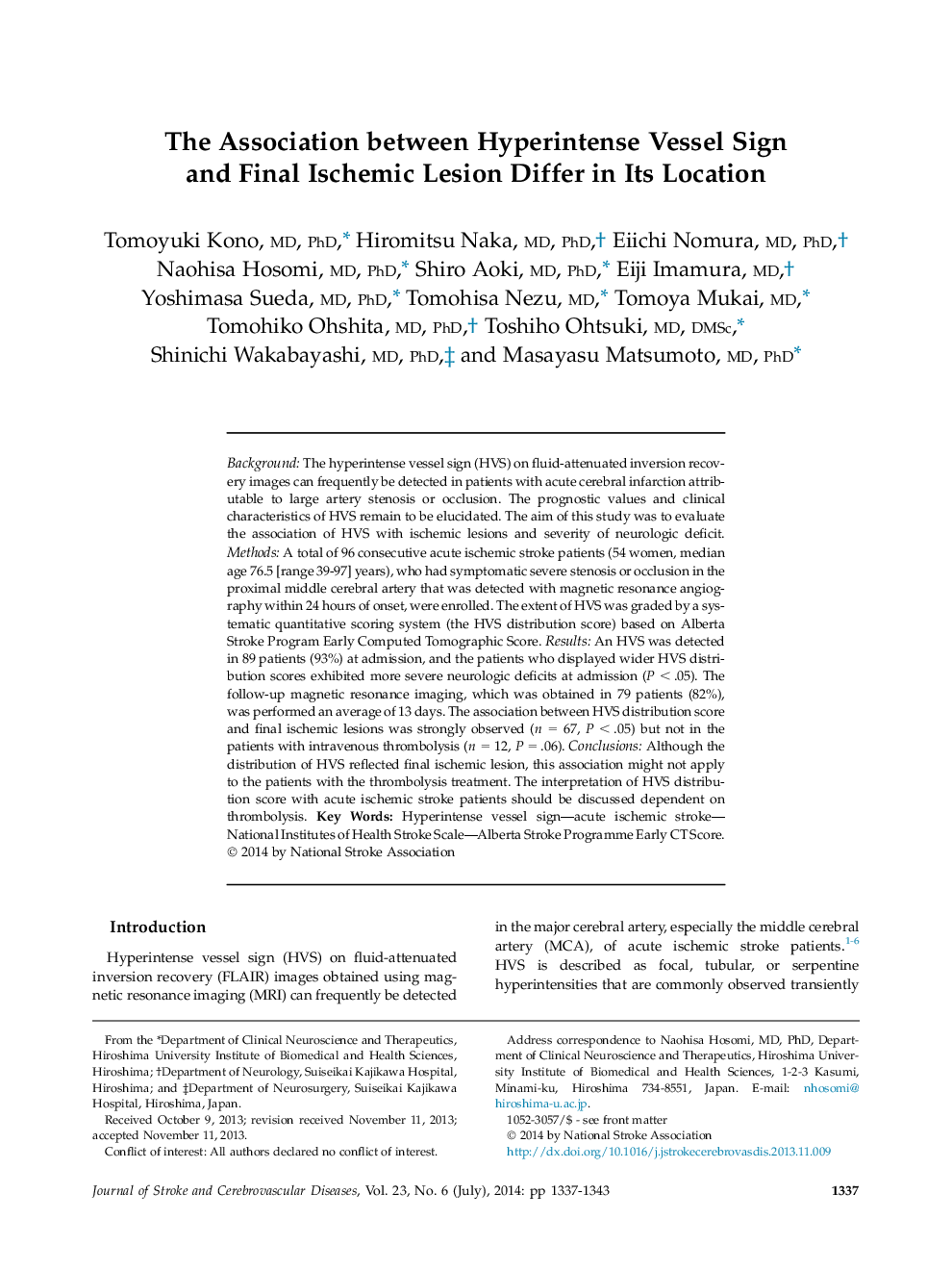| Article ID | Journal | Published Year | Pages | File Type |
|---|---|---|---|---|
| 5873255 | Journal of Stroke and Cerebrovascular Diseases | 2014 | 7 Pages |
BackgroundThe hyperintense vessel sign (HVS) on fluid-attenuated inversion recovery images can frequently be detected in patients with acute cerebral infarction attributable to large artery stenosis or occlusion. The prognostic values and clinical characteristics of HVS remain to be elucidated. The aim of this study was to evaluate the association of HVS with ischemic lesions and severity of neurologic deficit.MethodsA total of 96 consecutive acute ischemic stroke patients (54 women, median age 76.5 [range 39-97] years), who had symptomatic severe stenosis or occlusion in the proximal middle cerebral artery that was detected with magnetic resonance angiography within 24 hours of onset, were enrolled. The extent of HVS was graded by a systematic quantitative scoring system (the HVS distribution score) based on Alberta Stroke Program Early Computed Tomographic Score.ResultsAn HVS was detected in 89 patients (93%) at admission, and the patients who displayed wider HVS distribution scores exhibited more severe neurologic deficits at admission (P < .05). The follow-up magnetic resonance imaging, which was obtained in 79 patients (82%), was performed an average of 13 days. The association between HVS distribution score and final ischemic lesions was strongly observed (n = 67, P < .05) but not in the patients with intravenous thrombolysis (n = 12, P = .06).ConclusionsAlthough the distribution of HVS reflected final ischemic lesion, this association might not apply to the patients with the thrombolysis treatment. The interpretation of HVS distribution score with acute ischemic stroke patients should be discussed dependent on thrombolysis.
